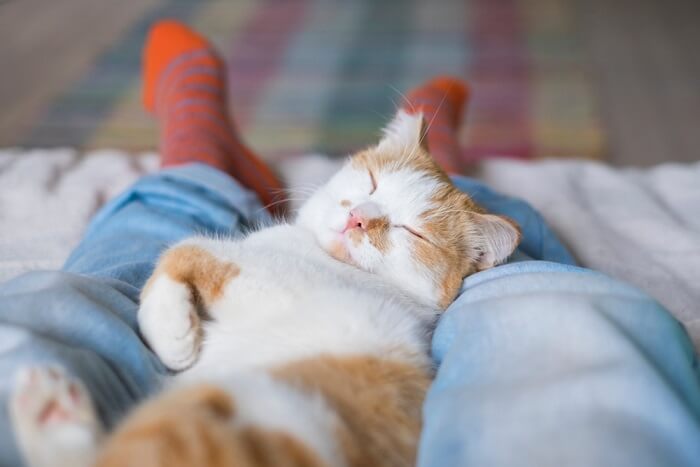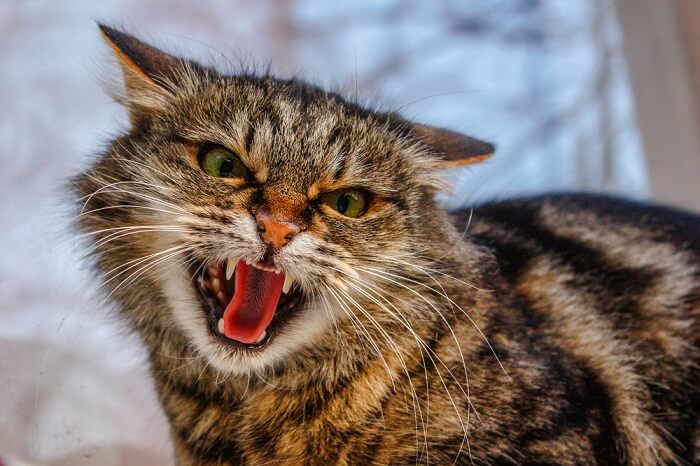Do German Shepherds Get Along With Cats?
This page contains affiliate links. We may earn money or products from the companies mentioned in this post through our independently chosen links, which earn us a commission. Learn More
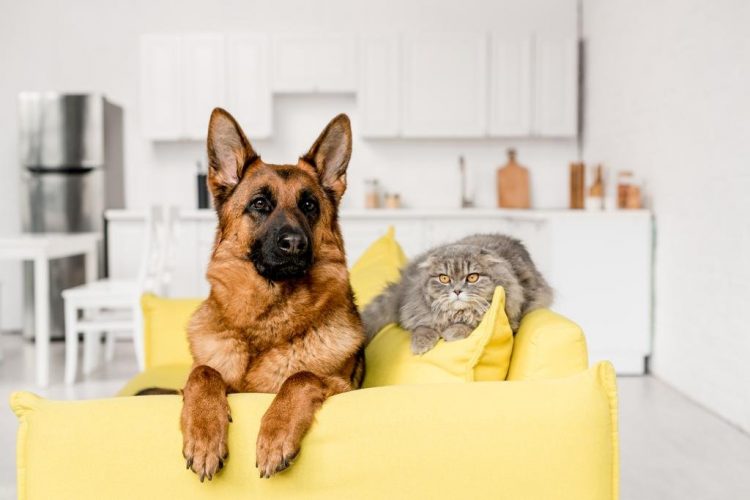
There are several factors that may influence the relationship between a German Shepherd and a cat. Personalities, timing, training, and socialization will all be factors if these two animals are going to get along.
German Shepherds are known to not get along with cats simply because they are working dogs. These dogs are intelligent, highly trainable, and incredibly social but just like any other dog, they can co-exist in a home with a cat.
Are German Shepherds good with cats? If socialized and trained properly, your pets can live peacefully together.
The German Shepherd Personality
It is important to understand the German Shepherd’s temperament. Here are a few things to keep in mind about this breed’s personality.
German shepherds are herding dogs and running around is in their blood, as well as herding. It is important to consider this natural tendency when teaching our German shepherds to get along with cats.
German Shepherds are wickedly smart and are consistently ranked as one of the smartest dog breeds. This means proper training is necessary for them to get along with cats or other animals.
German shepherds are loyal and want to please theirs owns when treated well. They are known to respond quickly and happily to any training. However, this breed is known for being protective, especially when it comes to the people that they love.
The Cat Personality
Now let’s take a look at the personality of a cat. Cats tend to be less intimidating than a German Shepherd, from an animal’s point of view. Even if your German Shepherd is loving and willing, your cat may not be open to the friendship.
Some cats can be quite aloof, while others can be surprisingly affectionate. But, if you have an impatient cat or one that is not affectionate, it might not get along with a dog. Dogs tend to be more physical with their affection which could mean a cat may lose patience if being licked or bothered. But most cats won’t intentionally start trouble with a German Shepherd or other large animals.
Researchers have determined the five main personality traits of cats, which are referred to as the Feline Five. The five include neuroticism, extraversion, dominance, impulsiveness, and agreeableness.
What You Need To Consider Before Making Introductions?
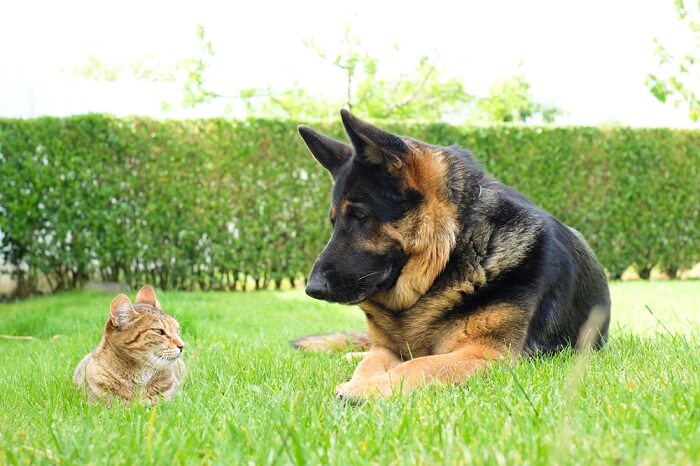
Here are a few things you should consider before getting a cat, especially if you already have an adult German Shepherd.
A German shepherd who has a high prey drive or has been bred and worked as a herding dog will be a little bit more difficult to persuade in befriending a cat. It is more likely the dog will chase the cat until exhausted. Your German Shepherd sees a furry moving creature, which tells them to chase it and attack it. This is because it is a hunting breed and their territory is not something they take lightly. They want to protect their territory against foreign entities.
It is important you have control over your German Shepherd for the relationship with your cat to work. Meaning, the dog must be able to listen to commands.
Start training your German Shepherd to be comfortable with cats when he is still a puppy or as soon as possible. The lessons that your dog learns during the early months of life will become second nature and this is true for both dogs and cats.
Making The Introduction
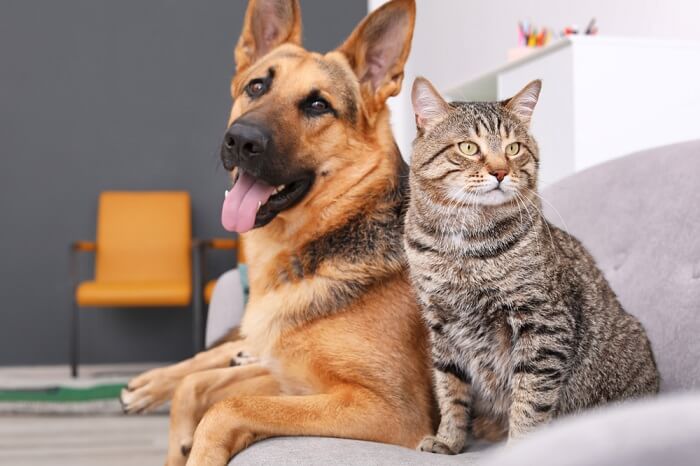
Scent Swapping
The first step in introducing your German Shepherd and cat should be swapping each other’s scent. Both dogs and cats rely heavily on scent so will be able to gather information about each other by sniffing and getting used to each other’s scents. This can be done by rubbing the dog with a cloth then placing it into the cat’s area, and vice versa.
The scented item should not be placed in the cats bed or comfort zones, in case it causes anxiety https://holisticdental.org/xanax-treat-anxiety/ and prevents the cat from accessing what it needs. Scent swapping can be repeated over a few days, by rubbing each other’s scents onto the other’s items or areas, as long as they appear to not feel stressed. Scent-swapping will usually occur naturally as the owner moves around each pets space, carrying the odor of the other on hands, and clothing.
Investigating
When both animals appear interested and calm, then it may be time to move onto to allowing each to investigate the other’s areas outside of their own space. Once they go back into their own space, the dog can be allowed to investigate where the cat has been exploring. As things progress and the newer pet appears comfortable to investigate further, remove the other pet for a while.
Visual Contact
Small amounts of limited visual contact should be done. This should happen when both animals are calm, and with both able to escape and neither can be trapped or have access blocked.
Meaning neither should be confined or restricted. There must be gentle, force-free restraint of the dog, like with a well-fitting body harness and connect to a loose lead while the cat is free to retreat to hiding places to access nearby.
Supervise the pets at all times and be constantly vigilant for any outward signs of emotional stress such as fear or excitement, as well as changes in body language or posture. As they get used to each other, provide plenty of rewards. Slowly engage less and allow the animals to be present with each other.
Actual Contact
There will come a time when the cat and dog have smelled, heard and seen each other for long enough to be familiar. It’s now time for them to stand on their own and share space comfortably. This should only happen when it is highly likely that they will be fine together.
Introductions should always be supervised actively and distractions should be in place when needed. You can use food or toy as lures to create space between the animals if needed by luring one away from the other if any tension occurs.
How To Make Puppy/Kitten Introductions?
The first step is to feed the two animals in close proximity to each other. But it is best to put your puppy on one side of a closed door and your kitten on the other. Most likely the two animals will not be comfortable seeing each other yet, but they will be able to pick up each other’s scent.
Do not introduce the two animals until your puppy is able to follow commands like sit, stay and stop. When your puppy is able to obey, test out a 5-minute meeting by placing your puppy in its kennel and let the kitten visit from outside. Gradually increase the amount of time that the animals are together until you reach 30 minutes over the next week or so.
Final Thoughts
German Shepherd and cats can get along well. In most cases, your dog and cat can live happily together when you follow the instructions listed above. If they still do not get along, you can still have fun with your pets separately but this will take more work on your part.


